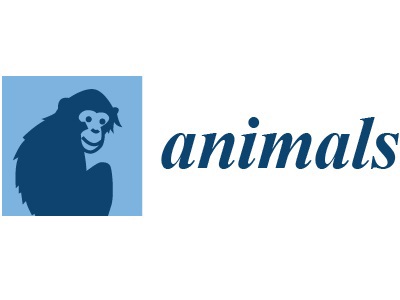Effect of Type and Dietary Fat Content on Rabbit Growing Performance and Nutrient Retention from 34 to 63 Days Old
1 Trouw Nutrition R&D Poultry Research Centre, 45950 Casarrubios del Monte, Spain
2 Departamento de Producción Agraria, ETSI Agrómica, Alimentaria y de Biosistemas, 28040 Madrid, Spain
*Author to whom correspondence should be addressed.
- Across species
- 2022
- Open Access
Animals 2021, 11(12), 3389; https://doi.org/10.3390/ani11123389
Ana Isabel Garcia-Ruiz

Simple Summary
An increase in the fat content of the diet increases the dietary energy concentration, and consequently, the growth and feed efficiency of the animals. The fatty acids (FA) profile of the fat source can also affect animal body composition. The purpose of this study was to test the effect of some fat sources added at different levels in growing rabbit feed. In this study, it was observed that the increment of dietary fat improved nitrogen efficiency utilization and reduced nitrogen excretion; the fat source also affected animal performance and mortality rate.
The study was carried out on individually and collectively housed growing rabbits from 34 to 63 days of age. Two experiments were conducted using three fat sources: Soybean oil (SBO), Soya Lecithin Oil (SLO), and Lard (L; Exp. 1), and SBO, Fish Oil (FO), and Palm kernel Oil (PKO; Exp. 2), added at two inclusion levels (1.5 and 4.0%). In both trials, 180 rabbits were housed in individual cages and additional 600 rabbits in collective cages from day 34 to 63. Animals fed with 4% dietary fat showed lower Daily Feed Intake (DFI) and Feed Conversion Ratio (FCR) than those fed with 1.5%, except in the individually housed animals in Exp. 1. In the collective housed group in Exp. 1, DFI was a 4.8% higher in animals fed with diets containing lard than those fed with SBO (p = 0.036). Lard inclusion also tended to reduce mortality (p = 0.067) by 60% and 25% compared with SBO and SLO diets, respectively. Mortality was the highest with the higher level of soya lecithin (14% vs. 1%, p < 0.01). A similar mortality rate was observed in the lowest level of SBO. In the grouped-housed animals in Exp. 2, a decrease of DFI (−12.4%), Bodyweight (BW) at 63 d (−4.8%), and Daily Weight Gain (DWG) (−7.8%) were observed with the inclusion of fish oil (p < 0.01) compared to other fat sources. Fish oil also tended to increase (p = 0.078) mortality (13.2%) compared with palm kernel oil (6.45%); similar results were found when animals were individually housed. The overall efficiency of N retention (NRE) increased with the highest level of fat in Exp. 1 (34.9 vs. 37.8%; p < 0.0001). It can be concluded that lard and palm kernel oil are alternative sources of fat due to the reduction of mortality. The inclusion of fish oil impaired animal productivity and increased mortality. An increment of the dietary fat level improved FCR and overall protein retention efficiency. View Full-Text